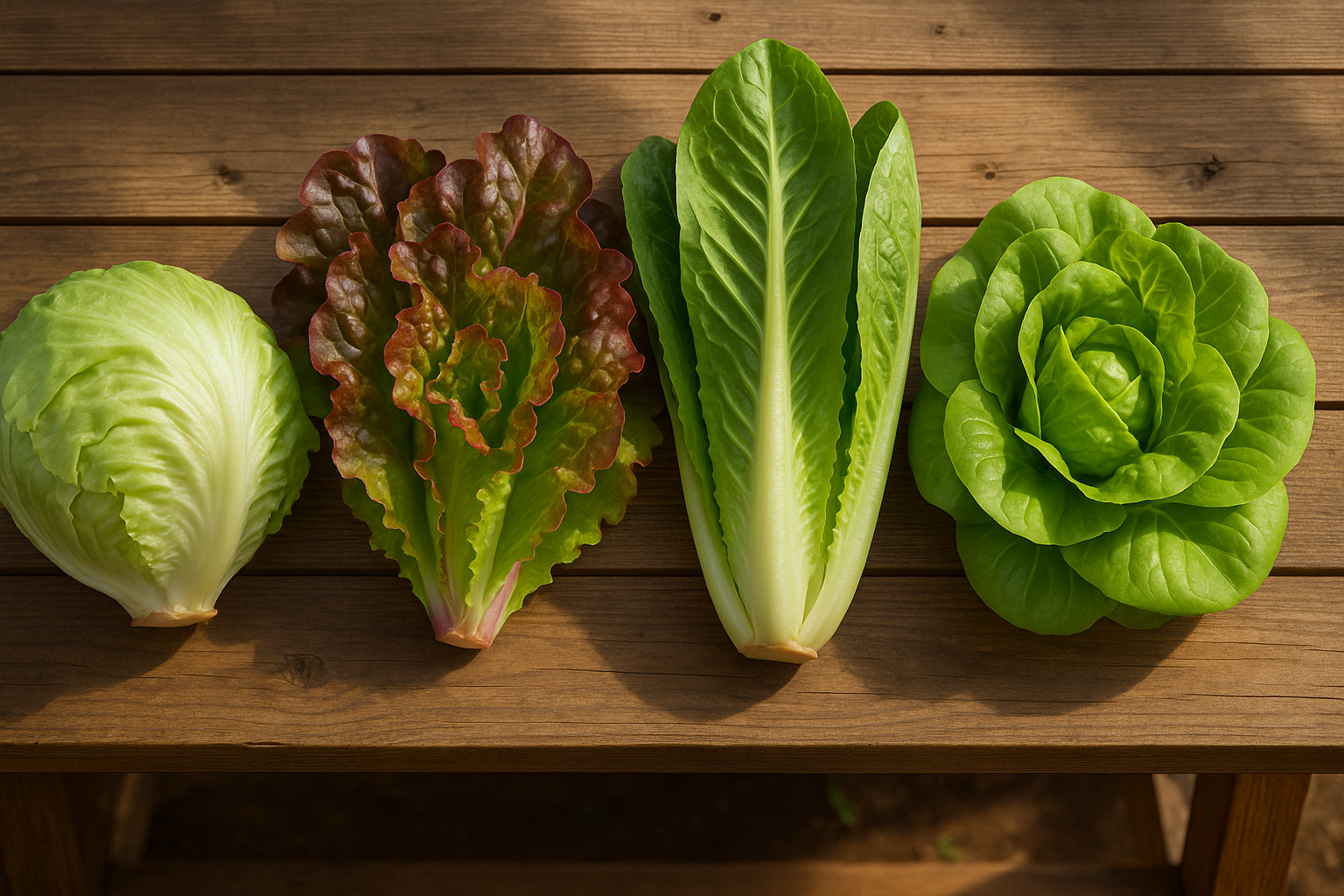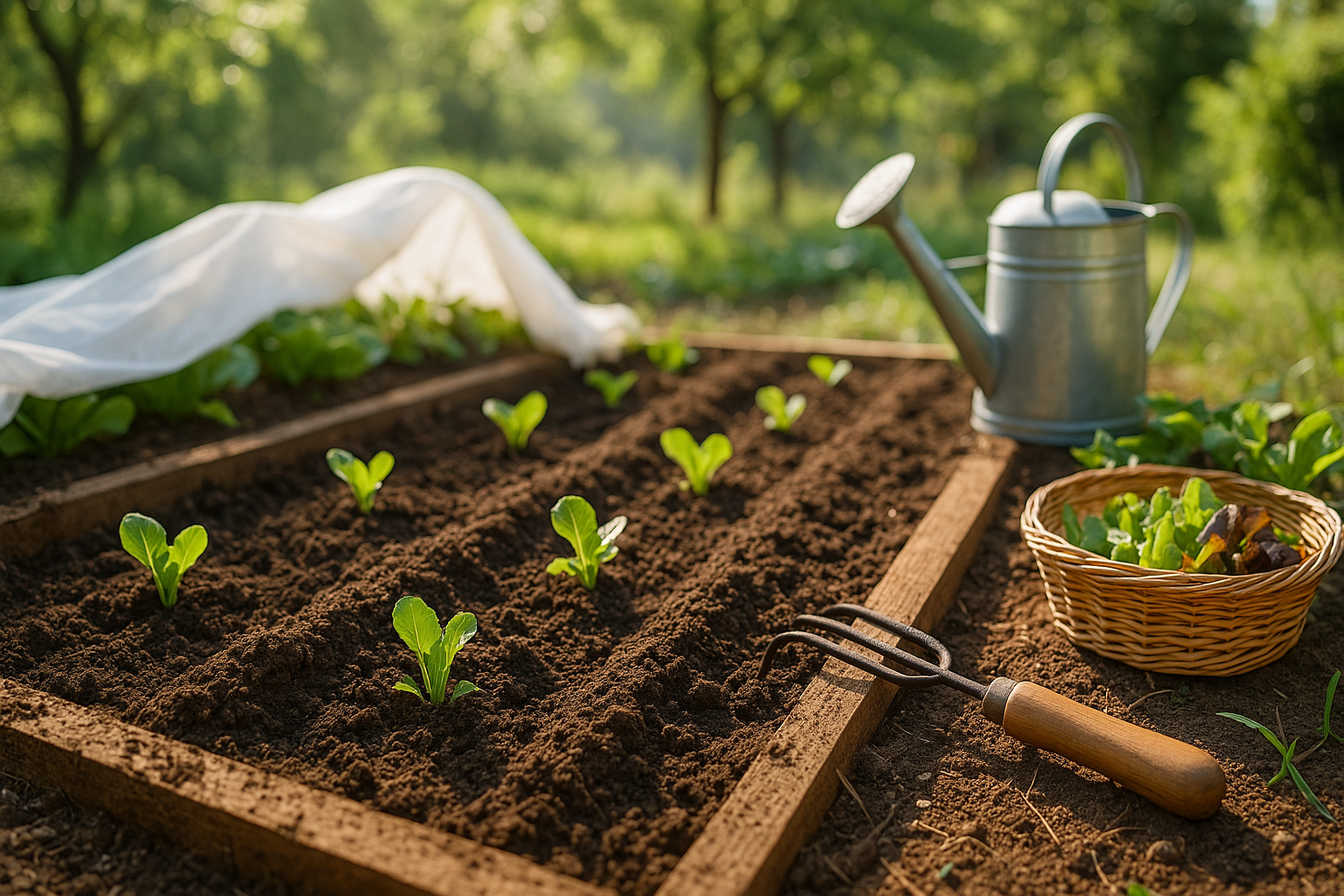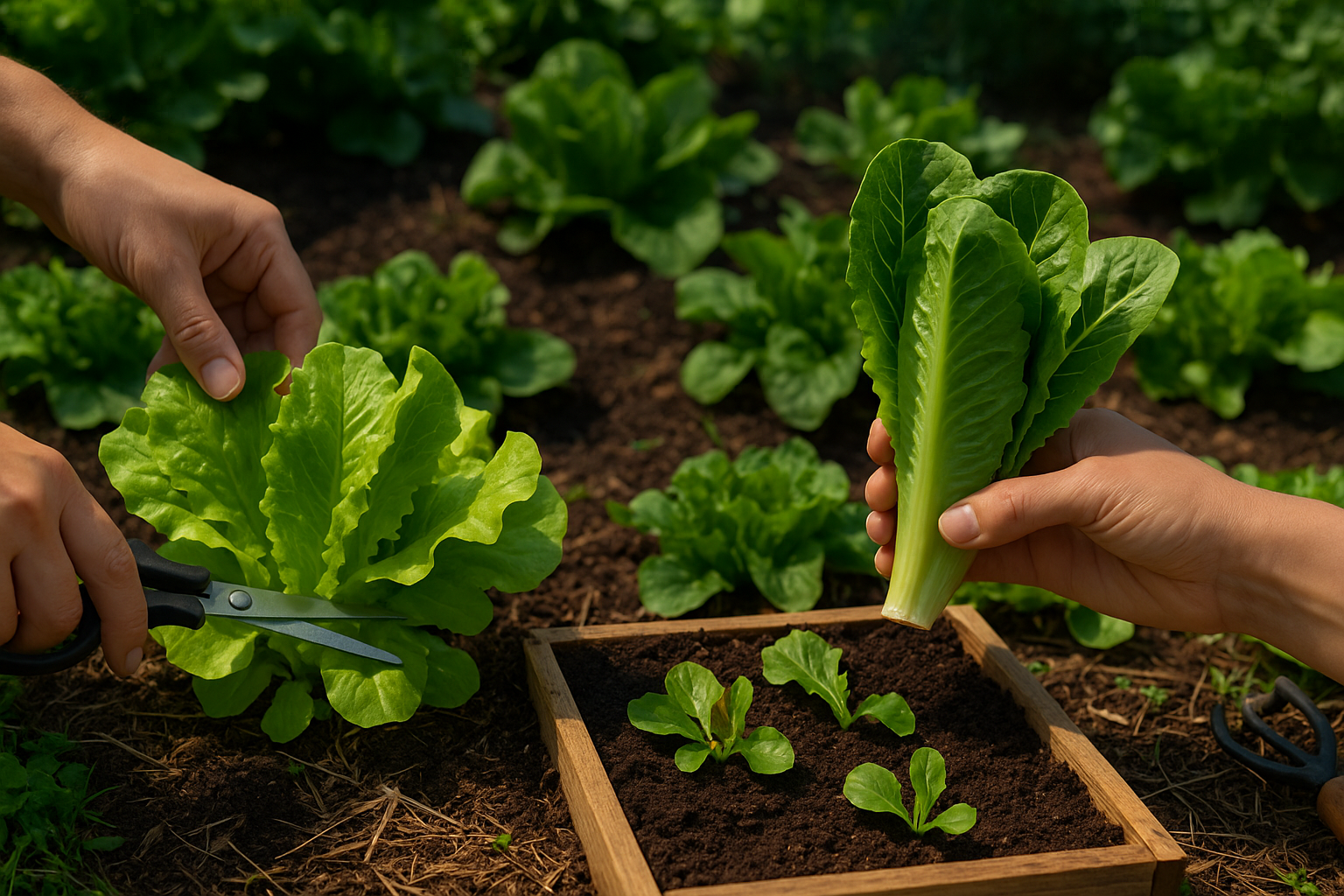When and How to Plant Lettuce Seeds Indoors and Outdoors
Lettuce is a versatile leafy green that comes in four main types: head, leaf, romaine, and butterhead. Each offers unique benefits—head lettuce (like iceberg) is crisp and perfect for salads; leaf lettuce grows quickly and provides colorful, tender leaves; romaine adds crunch and nutrition; and butterhead is prized for its soft, buttery texture.
When deciding which variety to plant indoors or outdoors, consider your available space, climate, and flavor preferences.
Choosing Varieties for Indoor and Outdoor Growing

For indoor growing, choose compact varieties such as Little Gem romaine or Buttercrunch butterhead, which thrive in containers and under grow lights. Outdoor gardeners with more space might opt for larger head lettuces like Crisphead or heat-tolerant leaf varieties if summers are hot.
Beginners will do well with easy-to-grow options like Black Seeded Simpson (leaf), which matures quickly and regrows after cutting, or Tom Thumb (butterhead), known for its small size and tender leaves.
Planting Schedule
For year-round lettuce, sow cool-weather types like romaine and leaf lettuce in early spring or late summer. For late spring and summer planting, choose heat-tolerant varieties such as Summer Bibb.
Starting Seeds Indoors

- Plant seeds 4–6 weeks before the last expected frost.
- Use seed trays filled with moist, loose soil.
- Provide plenty of light to prevent leggy growth.
- Transplant seedlings outdoors when they have a few true leaves and after the risk of frost has passed.
Direct Sowing Outdoors

- Sow seeds as soon as the soil can be worked.
- Cover seeds lightly with soil.
- Thin seedlings to ensure proper spacing.
Mixing and matching lettuce types not only boosts your harvest and keeps salads interesting but also ensures a steady supply of greens through changing weather and growing conditions.
Timing Your Planting
Getting the timing right for planting lettuce seeds is key to growing delicious, crisp heads or leafy harvests. Lettuce thrives in cool temperatures—ideally between 45°F and 65°F (7°C to 18°C)—so the best windows for sowing are in early spring and fall.
In most regions, you can direct sow seeds outdoors about 2-4 weeks before your average last spring frost date. Soil that’s workable but not too chilly gives seeds a strong start. Conversely, in autumn, aim to sow seeds about 8-10 weeks before your first expected freeze.
For those itching to start early, indoor sowing is a smart move: plant lettuce seeds in trays under grow lights or on a bright windowsill 4-6 weeks before moving them outside. Just remember to harden off seedlings first by gradually introducing them to outdoor conditions over a week, once nighttime lows are above 30°F (-1°C).
Succession planting is another game-changer for lettuce lovers. Instead of planting all your seeds at once, sow a small batch every 1-2 weeks. This staggered approach means you’ll enjoy a steady supply of fresh greens rather than a single, overwhelming harvest. For example, start your first row early in the season, then sow additional rows or container patches every 10 days. This also helps hedge against unpredictable temperature swings, ensuring at least some of your crops mature in ideal conditions.
Whether you’re gardening in raised beds or balcony pots, these timing strategies help you make the most of lettuce’s short growing cycle, so you can enjoy salad greens for months rather than weeks.
Preparing the Planting Site (Indoors and Outdoors)
To give your seeds the best start, pay close attention to soil quality and site setup, whether you’re planting indoors or outdoors. Healthy plants need loose, well-draining soil—waterlogged roots can rot, so mix in compost or sand if your soil tends to stay soggy.
Look for a rich, crumbly texture and add plenty of organic matter, such as leaf mold or aged manure, to boost fertility; healthy soil encourages robust root development. Most common veggies and flowers thrive in soil with a pH between 6.0 and 7.0, so consider getting a soil test kit from your local garden center. It gives you the info you need to adjust with lime or sulfur if the pH isn’t ideal.
For outdoor garden beds, choose a spot that gets at least 6 hours of sunlight daily. Clear away weeds, break up compacted soil with a spade or fork, and blend in your compost to a depth of 6-12 inches. Raised beds are a great choice if drainage is an issue.
Indoors, opt for shallow trays or pots with drainage holes—seedlings dislike “wet feet.” Use a light, sterile seed-starting mix rather than dense garden soil, which can harbor pests and diseases. Place trays near a south-facing window or set up fluorescent grow lights just a few inches above seedlings to ensure they get plenty of light; leggy, pale sprouts are a sign they need more.
The ideal germination temperature for most seeds is 65-75°F—keep trays away from drafts or cold windowsills. With these smart strategies, you’ll create an environment where seeds can sprout strong and healthy, setting the foundation for a productive garden season.
How to Plant Lettuce Seeds Indoors
Planting lettuce seeds indoors is a fantastic way to get a jump on the growing season, and it’s simple if you follow a few easy steps. Start by filling seed trays or small pots with a good-quality, moistened seed-starting mix.
Sow lettuce seeds about 1/8 inch deep—just enough to cover them lightly—since they need some light to germinate. Space the seeds about one inch apart to give seedlings room to grow without overcrowding.
Place the trays in a bright location; a sunny windowsill that receives at least 12-14 hours of light a day works well, but using a grow light ensures sturdy, uniform growth. Keep the soil consistently moist by gently misting with water or using a spray bottle; avoid overwatering to prevent mold or damping-off disease.
Lettuce likes humidity, so you can cover the trays loosely with a clear plastic lid or wrap. However, remove the cover as soon as the seeds sprout to improve airflow and avoid excess moisture.
To prevent leggy, weak seedlings, be sure they receive enough light—if they look spindly, move the lights closer or add supplemental lighting.
When seedlings have at least two true leaves and outdoor temperatures are consistently above 45°F (7°C), start hardening them off by gradually introducing them to outdoor conditions. Set trays outside for a few hours each day, increasing their time outdoors over a week.
Transplant them into the garden, spacing each plant 6-8 inches apart in well-prepared, fertile soil. Water thoroughly after transplanting and keep young plants shaded for a few days if it’s sunny to help them adjust.
This simple indoor start gives you healthy, early lettuce crops that flourish once spring arrives.
How to Plant Lettuce Seeds Outdoors
Planting lettuce seeds outdoors is an easy way to enjoy fresh greens straight from your garden. Start by choosing a well-drained, sunny spot and working the soil until it’s loose and crumbly—adding compost can boost growth.
For row planting, draw shallow furrows about 1/4 inch deep and space the rows 12-18 inches apart to allow room for mature heads. Drop seeds thinly along the row and gently cover them with fine soil, patting down lightly to keep them in place.
If you prefer a quicker, scattered harvest for cut-and-come-again salads, broadcast sow seeds evenly over the soil and cover similarly. Keep the sowing area moist until germination.
Once seedlings emerge, it’s crucial to thin them for healthy growth: for leafy varieties, leave 4-6 inches between each plant, while head lettuces need about 8-12 inches. This spacing helps prevent overcrowding and gives the roots room to develop, reducing the risk of disease.
Weather and Pest Challenges
Lettuce seeds germinate best in cool weather, so direct sow in early spring or late summer when soil temperatures are below 70°F. If a sudden heatwave threatens, shade the seedbed with row covers or old bedsheets during the hottest part of the day, and keep the soil evenly moist without waterlogging.
For unexpected late frosts, lightweight fabric row covers or cloches protect tender seedlings without overheating them.
Protecting Against Pests
Pests like slugs and snails love young lettuce. Protect seedlings by surrounding them with crushed eggshells or diatomaceous earth, or try beer traps to lure slugs away. Regular checks will help catch problems early—remove visible pests by hand and avoid overwatering, as soggy soil invites rot and fungal diseases.
By following these simple steps, you’ll create a healthy, productive lettuce patch ready for harvest in just a few short weeks.
Caring for Your Lettuce Plants
Consistent care is key to growing lush, flavorful lettuce, whether you’re gardening indoors or outdoors. Water your plants deeply and regularly, keeping the soil moist without letting it become soggy. Uneven moisture can lead to bitter leaves and premature bolting (when the plant shoots up a flower stalk and stops producing new leaves).
Mulching around your lettuce with straw, grass clippings, or even shredded newspaper helps retain moisture, suppress weeds, and keep roots cool—especially important during warm spells. A light feeding every few weeks with a balanced, organic fertilizer like compost tea or fish emulsion will encourage steady, leafy growth without attracting pests.
Watch for signs of bolting—such as rapid upward growth and the formation of a central stalk—and harvest your lettuce promptly if this begins, since bolted lettuce tastes bitter. Pests like slugs and aphids are common annoyances. To keep slugs at bay, scatter crushed eggshells, diatomaceous earth, or set simple beer traps near your plants. For aphids, a gentle spray of water or introducing beneficial insects like ladybugs can keep populations under control.
Disease issues such as downy mildew are minimized by avoiding overhead watering and ensuring good air circulation—thin out crowded plants if needed. Make regular, small harvests by snipping outer leaves, which encourages the plant to produce new growth and extends your harvest. Rotating your crop locations and cleaning up plant debris can also prevent many disease and pest problems.
By nurturing your lettuce with these steady, natural routines, you’ll enjoy a consistent supply of crisp greens and reduce the headaches of common problems.
Harvesting Lettuce for the Best Yield

Knowing exactly when to harvest your lettuce is key for the best yield and flavor, but timing can vary depending on the variety.
Leaf Lettuce
For leaf lettuce, look for leaves that are large enough to eat—usually four to six inches long. With loose-leaf types, you don’t need to wait for the whole plant to mature; instead, use the cut-and-come-again method. Simply snip the outer leaves about an inch above the base while leaving the center intact. This encourages new growth and lets you return for more harvests over several weeks.
Head Lettuce
Head lettuces, like iceberg or romaine, should be picked when the heads are firm and full-sized but before they start to bolt (send up a flower stalk). Harvest these by cutting the entire head at the base. For the best texture, try to do this in the morning when the plant is crisp and cool.
Tips to Extend Your Lettuce Season
- Water consistently.
- Provide light shade during hot periods.
- Stagger planting in two-week intervals.
- After harvesting leaves, feed plants with diluted compost tea or a balanced fertilizer to boost regrowth.
- Regularly check for pests.
- Promptly remove any flowers to help lettuce focus on producing leaves instead of seeds.
Keeping these practices in mind will help you enjoy a continuous, abundant harvest—whether you prefer crisp heads or tender greens.
